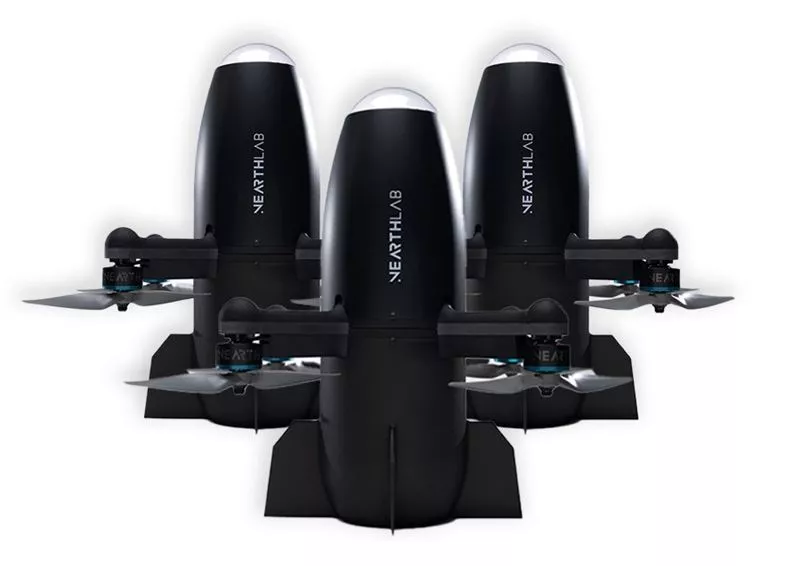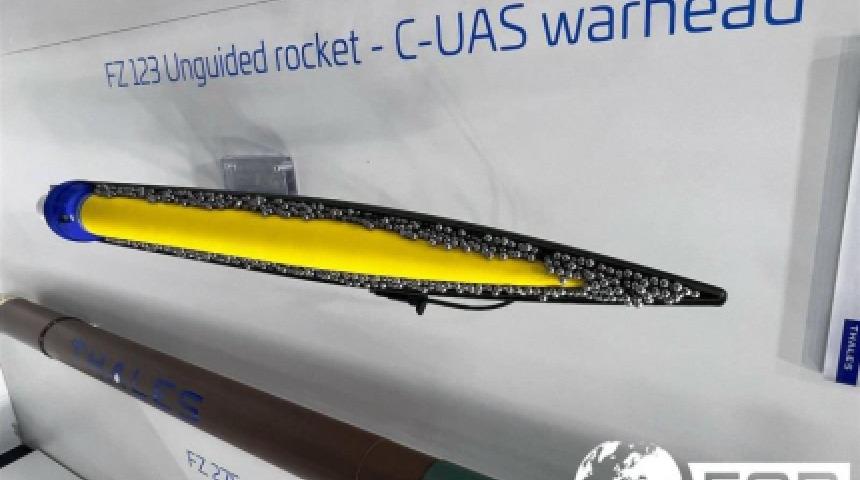「KAiDEN」登場:韓國小型撞擊型攔截機以 AI 為眼、以速度為刃

Nearthlab公司推出「KAiDEN」反無人機攔截系統(上圖取自Nearthlab公司網站)
南韓新創 Nearthlab 公開代號 KAiDEN 的反無人機攔截系統,主打視覺 AI 偵追+高速碰撞硬殺能力,機重約 2.8 公斤、最高衝擊速可達 250 km/h,酬載約 1 公斤。系統支援單機遙控或「蜂群」自主協同攻擊,可在半徑 5,000 公尺 範圍偵測目標,設計重點在以低成本、可大量部署的方式對抗第1至第2類小型商用/戰術無人機。Nearthlab 強調該方案源自實戰經驗,目標快速切入 C-UAS 市場並與地面防空系統整合。
Nearthlab’s KAiDEN is a lightweight, vision-AI guided kinetic interceptor (~2.8 kg, ~250 km/h impact) supporting swarm tactics and 5 km detection reach — optimized for massed, low-cost C-UAS engagements against small commercial and tactical drones.
KAiDEN 的設計核心是機首光電+vision AI,靠機載視覺演算法完成目標偵測、分類與末段攔截導引;其動作模式為發射後以高速度撞擊(kinetic hit)目標,摧毀或致使對方失控墜落,屬於典型的「硬殺(hard-kill)」概念。
The platform’s front-mounted EO sensor and onboard vision-AI enable target detection, classification and terminal guidance — culminating in a kinetic impact to neutralize small UAVs.
🔹 規格重點(Key Specs)
-
機體重量:約 2.8 kg;酬載:約 1 kg。
-
攻擊速度:衝刺攻速可達 250 km/h(終端碰撞動能為關鍵殺傷因子)。
-
偵測範圍:操作者可監偵或遙控 5,000 m 內的空域動態。
-
編組與運用:支援 swarm 演算法,一名操作者可同時指揮多機編隊攻擊多個目標。
Weight ~2.8 kg with 1 kg payload; terminal speed up to 250 km/h; operator detection/control to 5 km; supports swarm algorithms for simultaneous multi-target engagement.
🔹 戰術應用(Tactical Use Cases)
KAiDEN 適合部署於部隊前線、關鍵基礎設施周邊或移動防護隊形:當敵方以小型多旋翼或迷你固定翼無人機進行偵察或自殺攻擊時,KAiDEN 可做為機動化點防禦資產,迅速發動攔截,並可透過蜂群策略實現高冗餘打擊。
KAiDEN suits forward units and infrastructure defense: rapid kinetic interception of small quadcopters or loitering munitions, with swarm redundancy to overwhelm targets.
🔹 系統整合與擴充(Integration & Growth)
Nearthlab 表示 KAiDEN 可與現役 C-UAS 與地面防空網整合,未來還可加入聯網化指管(networked C2)、更強的抗干擾鏈路及多光譜感測(例如 RAD/EO/IR 融合),以提高在複雜電磁與視覺條件下的作戰穩定性。
The system can integrate into existing C-UAS architectures and evolve with networked C2, anti-jam comms and multispectral sensing for contested environments.
🔹 風險與限制(Risks & Limitations)
-
終端撞擊型的道德與法規:以高速撞擊為殺傷手段,執行地點若靠近民居或敏感基礎設施,殘片與誤擊風險需評估。
Kinetic intercepts pose collateral and liability concerns, especially near populated areas.
-
視覺 AI 的天候侷限與反制:強光、煙霧、雨霧或反偵測塗層可能降低視覺 AI 的效能,目標採用迷彩或電子對抗時需備援感測方案。
Vision-AI can be degraded by adverse weather, obscurants, or deliberate signature reduction.
-
蜂群協作下的指揮控制挑戰:大規模蜂群要求可靠的 C2 與抗干擾通信,否則可能出現協同失靈或誤擊。
Swarm ops demand robust, jam-resistant C2 to avoid coordination failures.
結語
KAiDEN 代表當前 C-UAS 市場的一條明確路徑:小型化、低成本、可群組化的硬殺攔截器,專門對付數量化、商用化的無人機威脅。對台灣與印太地區而言,這類系統在前線據點、港埠或重要基礎設施防護上具實用價值;但在部署時必須搭配多感測融合、法規審查與嚴格交戰準則,以降低誤擊與民生風險。
KAiDEN typifies a pragmatic C-UAS approach — mass-deployable kinetic interceptors for small drone swarms — but effective use requires sensor fusion, robust C2 and strict rules of engagement to mitigate collateral risks.




回應文章建議規則: